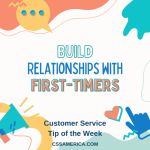
I was privileged to be at a school district’s leadership conference recently, and a portion of the morning activities included a student panel talking about their experiences (good and bad) during their time in the school system.
One of the students – a high schooler who was blind – noted his frustration when he entered middle school because the teachers didn’t know how to teach someone who couldn’t see. So the student decided that at the start of each semester, he would write a letter to the teachers that told them how to teach him.
Imagine that – a student telling a teacher how to teach him – incredible story and brilliant idea by this young man; the idea enhanced his learning and the experience for the teachers as well.
This is a story from which we can all learn a lesson.
Maybe you don’t have the greatest boss in the world – they’re not great at asking what you need to be successful, or they’re not the best at growing your professional skills and getting the most out of you.
Find ways – a letter, a chat over coffee, an informal sit-down meeting in a conference room – to tell them about how to best work with you for their benefit, your benefit, and the benefit of the company and customer.
Let’s look at a different application of this story. What could you learn by asking the customer how you can best help them? Instead of telling them that you’ll send an e-mail follow-up, ask how they’d like you to communicate with them. Instead of mapping out your own relationship development plan, ask what’s the best way for you to learn about them to ensure you best know their needs and goals. Instead of telling them how they can learn more about your products, services, and customer service resources, ask how they’d like to learn about them.
Learn from this inspiring student – teach others how to teach you.
Signup for FREE Tips! Contact Us More Resources for You Visit Our Home Page






















